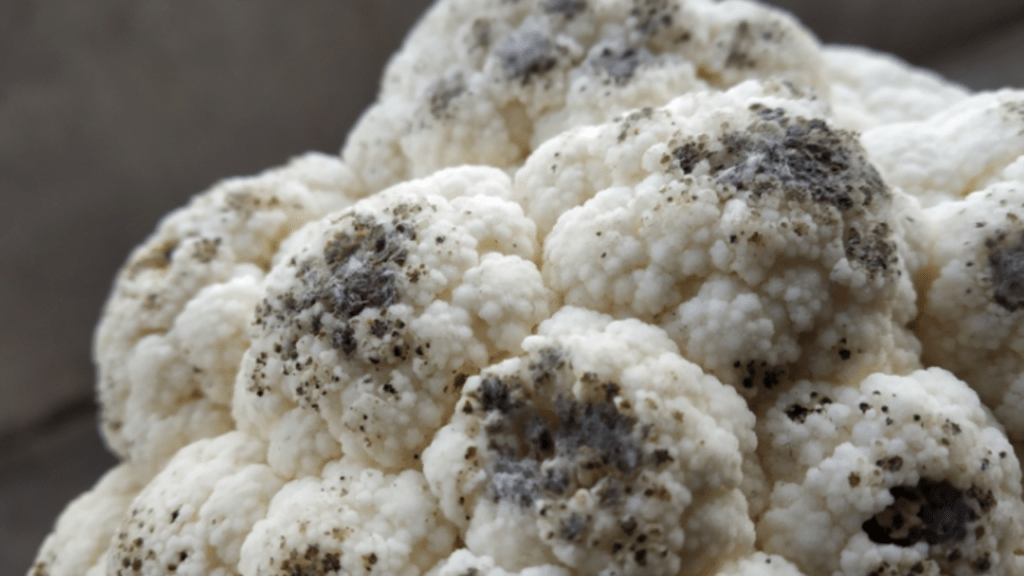
The Ultimate Guide to Dealing with Black Spots on Cauliflower
Cauliflower is a versatile and nutritious vegetable, but black spots can sometimes appear, making it less appetizing. In this ultimate guide, we’ll cover everything you need to know about preventing and treating black spots on cauliflower, so you can enjoy this delicious vegetable without any blemishes. Whether you’re a home cook or a professional chef, these tips and techniques will help you maintain the quality of your cauliflower and ensure that it stays fresh and appealing.
Black spots on cauliflower can be a concern for many gardeners and home cooks. It can be frustrating to spend time growing and caring for your cauliflower, only to find it marred by black spots. However, there are several steps you can take to prevent and treat causes of dark spots on cauliflower. First, it’s important to keep an eye on your cauliflower plants and make sure they are getting enough water and sunlight. Proper watering and adequate sunlight can help prevent the development of black spots. Additionally, be sure to remove any damaged or rotting leaves from the cauliflower plant to prevent the spread of disease. If you do notice black spots on your cauliflower, you can try spraying the affected area with a mixture of water and baking soda to help control the spread of the spots. Another method is to remove the affected areas and harvest the cauliflower early to prevent further damage. By following these tips and techniques, you can ensure that your cauliflower stays free from black spots and remains fresh and appetizing.
Table of Contents
ToggleUnderstanding Black Spots on Cauliflower
What Are Black Spots?
causes of dark spots on cauliflower are a common issue that can affect the quality and taste of the vegetable. These black spots are caused by a fungal disease known as black rot. The disease is characterized by the appearance of small, sunken black spots on the leaves and heads of the cauliflower. If left untreated, black rot can lead to the decay and deterioration of the entire plant. However, there are several steps you can take to prevent and treat black spots on cauliflower. First, it’s important to keep an eye on your cauliflower plants and make sure they are getting enough water and sunlight. Proper watering and adequate sunlight can help prevent the development of black spots. Additionally, be sure to remove any damaged or rotting leaves from the cauliflower plant to prevent the spread of the disease. If you do notice black spots on your cauliflower, you can try spraying the affected area with a mixture of water and baking soda to help control the spread of the spots. Another method is to remove the affected areas and harvest the cauliflower early to prevent further damage. By following these tips and techniques, you can ensure that your cauliflower stays free from black spots and remains fresh and appetizing.
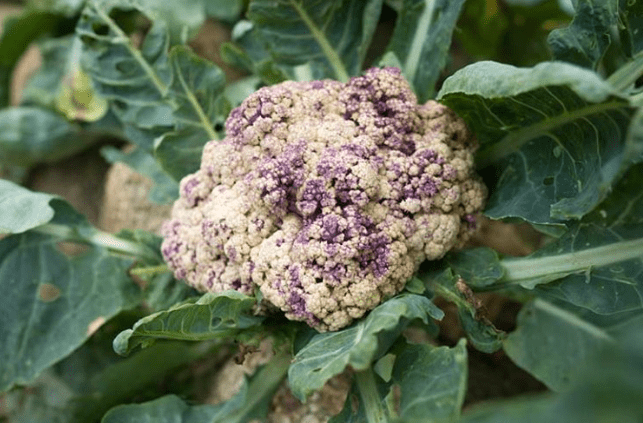
Why Are They a Problem?
causes of dark spots on cauliflower can be a problem because they can indicate the presence of a fungal or bacterial disease, which can affect the quality and taste of the cauliflower. These black spots can also lead to the deterioration of the cauliflower and make it unsuitable for consumption. Additionally, black spots can reduce the shelf life of the cauliflower, making it less appealing to consumers. To ensure that your cauliflower remains healthy and free from black spots, it’s important to take preventive measures and address any issues promptly.
Is It Safe to Eat?
Causes of dark spots on cauliflower can be a problem because they can indicate the presence of a fungal or bacterial disease, which can affect the quality and taste of the cauliflower. These black spots can also lead to the deterioration of the cauliflower and make it unsuitable for consumption. To ensure that your cauliflower remains healthy and free from black spots, it’s important to take preventive measures and address any issues promptly. Another method is to remove the affected areas and harvest the cauliflower early to prevent further damage. By following these tips and techniques, you can ensure that your cauliflower stays free from black spots and remains fresh and appetizing. It is important to carefully inspect your cauliflower and avoid consuming any with black spots to prevent potential health risks.
Causes of Black Spots on Cauliflower
Environmental Factors
Temperature and humidity.
Temperature and humidity can both play a role in the development of causes of dark spots on cauliflower. High humidity levels can create ideal conditions for fungal and bacterial diseases to thrive, leading to the formation of black spots on the cauliflower. Additionally, temperature fluctuations can also contribute to the development of black spots, especially if the cauliflower is not stored in optimal temperature conditions. It’s important to store cauliflower in a cool, dry place to help prevent the formation of black spots. By controlling the temperature and humidity levels in the storage area, you can help reduce the risk of black spots and ensure that your cauliflower remains fresh and safe to consume.
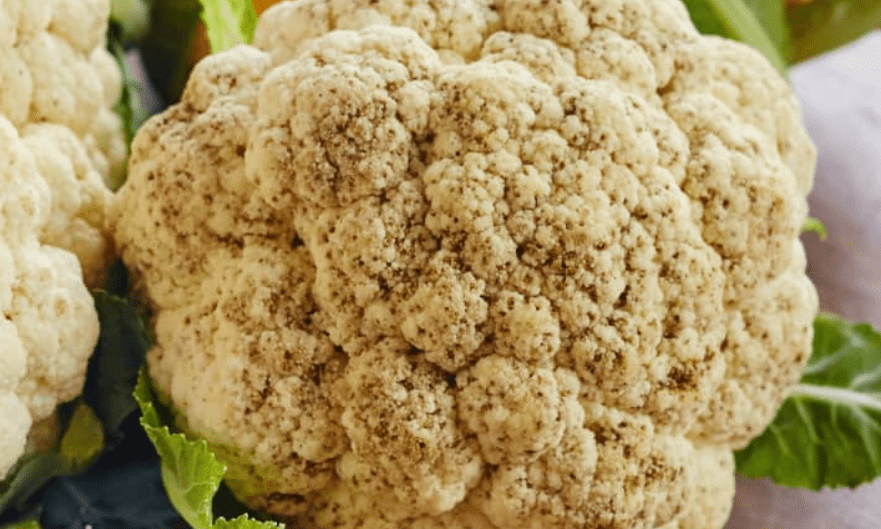
Pests and Diseases
Common pests that cause black spots.
There are several common pests that can Causes of dark spots on cauliflower. These include aphids, caterpillars, and cabbage maggots. These pests feed on the cauliflower leaves and can cause damage to the plant, leading to the formation of black spots. It is important to carefully inspect your cauliflower and avoid consuming any with black spots to prevent potential health risks. Additionally, proper pest control methods can help prevent the development of causes of dark spots on cauliflower. Using organic or chemical insecticides can help control pest populations and reduce the risk of black spots forming on cauliflower. Proper sanitation practices, such as removing and destroying infested plants, can also help prevent the spread of pests and diseases that can cause black spots. By taking these preventive measures, you can ensure that your cauliflower remains healthy and free of black spots.
Fungal and bacterial infections.
Fungal and bacterial infections can pose a threat to the health of your cauliflower plants. These infections can cause black spots to form on the leaves, which can ultimately lead to damage to the plant and affect its overall health. It is important to be vigilant and regularly inspect your cauliflower plants for any signs of black spots. If you notice any, it is important to take action to prevent the spread of the infection. One way to do this is by using proper pest control methods to prevent pests such as aphids, caterpillars, and cabbage maggots from feeding on the leaves and causing damage. In addition, using organic or chemical insecticides can help control pest populations and reduce the risk of black spots forming on cauliflower. Proper sanitation practices, such as removing and destroying infested plants, can also help prevent the spread of pests and diseases that can cause black spots. By taking these preventive measures, you can ensure that your cauliflower remains healthy and free of black spots.
Nutritional Deficiencies
Lack of essential nutrients.
Nutritional deficiencies can have a significant impact on overall health. It is important to ensure that you are getting all the essential nutrients your body needs to function properly. Lack of essential nutrients can lead to a variety of health issues, including fatigue, weakness, and an increased risk of developing chronic diseases. In order to prevent nutritional deficiencies, it is important to maintain a balanced and varied diet that includes a wide range of fruits, vegetables, whole grains, lean proteins, and healthy fats. Additionally, taking a daily multivitamin can help fill in any potential gaps in your diet. It is also important to be aware of any specific dietary needs or restrictions you may have, and to work with a healthcare professional if you have concerns about getting enough of certain nutrients. By being proactive about your nutrition and making informed choices about your diet, you can help prevent nutritional deficiencies and support your overall health and well-being.
Poor Storage Conditions
Improper handling and storage methods.
Improper handling and storage methods can lead to food spoilage and the loss of essential nutrients. It is important to store food properly in order to maintain its nutritional value. Exposure to light, heat, and air can cause certain vitamins and nutrients to break down, leading to a decrease in the overall nutritional quality of the food. It is important to store food in a cool, dark, and dry place in order to preserve its nutritional content. Additionally, it is important to handle food properly in order to prevent contamination and the growth of harmful bacteria. By following proper food handling and storage practices, you can help ensure that the food you eat retains its nutritional value and supports your overall health.
Preventing Black Spots on Cauliflower
Proper Cultivation Practices
Proper cultivation practices are essential for maintaining the quality and nutritional value of cauliflower. One of the common issues that can arise during cultivation is the development of black spots on the cauliflower heads. This can be caused by a variety of factors, including environmental stress, nutrient deficiencies, or disease. To prevent causes of dark spots on cauliflower, it is important to ensure that the plants are provided with adequate nutrition and water. Additionally, proper spacing between plants and good air circulation can help prevent the development of black spots. It’s also important to monitor the plants regularly for signs of disease or pest infestations and take appropriate measures to prevent their spread. By following proper cultivation practices, you can help ensure that your cauliflower crop remains healthy and free from black spots, resulting in higher quality and more nutritious produce.
Optimal Growing Conditions
Optimal Growing Conditions are essential for cultivating high-quality cauliflower. Cauliflower thrives in cool, moist environments with well-drained soil and plenty of sunlight. It is important to provide the plants with adequate nutrition and water to promote healthy growth and prevent the development of black spots on the cauliflower heads. Proper spacing between plants and good air circulation can also help prevent the onset of black spots. Additionally, monitoring the plants regularly for signs of disease or pest infestations and taking appropriate measures to address any issues that arise is crucial for maintaining the quality and nutritional value of the cauliflower crop. By following these optimal growing conditions and cultivation practices, you can ensure that your cauliflower crop remains healthy and free from black spots, resulting in higher quality and more nutritious produce.
Pest and Disease Management
are important aspects of maintaining a healthy cauliflower crop. To prevent and manage pests and diseases, it is important to regularly inspect the plants for any signs of infestation or infection. Implementing cultural and biological controls, such as crop rotation, using resistant varieties, and introducing natural predators of pests, can help minimize the risk of pest and disease problems. Additionally, using organic or natural pest control methods, such as neem oil or insecticidal soap, can help manage pest infestations without harming the environment or human health. It is important to stay proactive in pest and disease management to ensure a healthy and productive cauliflower crop. By following proper cultivation practices and implementing effective pest and disease management strategies, you can help ensure that your cauliflower crop remains healthy and free from black spots, resulting in higher quality and more nutritious produce.
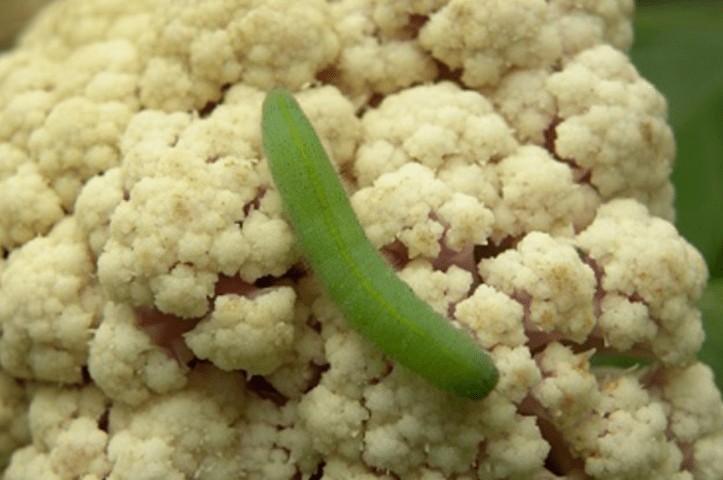
Nutrient Management
Nutrient Management is essential for the proper growth and development of cauliflower crops. It is important to provide the necessary nutrients, such as nitrogen, phosphorus, and potassium, to promote healthy plant growth and maximize yield. Regular soil testing can help determine the nutrient levels in the soil and guide the application of fertilizers to meet the specific needs of the cauliflower plants. Additionally, organic matter and compost can be added to the soil to improve its nutrient content and overall fertility. Proper irrigation and drainage are also crucial for nutrient management, as excess water can lead to nutrient leaching and deficiencies, while insufficient water can hinder nutrient uptake by the plants. By following optimal growing conditions and nutrient management practices, you can ensure a healthy and productive cauliflower crop with high nutritional value.
Harvesting Techniques
Harvesting Techniques are crucial for ensuring that your cauliflower crop reaches its full potential. The best time to harvest cauliflower is when the heads are firm and compact, typically around 6-8 inches in diameter. It’s important to harvest cauliflower heads before they become overgrown and start to flower, as this can result in a bitter taste and lower quality produce.
When harvesting, use a sharp knife to cut the cauliflower head from the plant, leaving a few inches of stem attached. This will help protect the head during transportation and storage. It’s best to harvest cauliflower in the morning when the heads are cool and the dew has evaporated, as this can help prolong shelf life and maintain the quality of the produce.
Proper post-harvest handling is also important to ensure the cauliflower remains fresh and marketable. Store the harvested heads in a cool, humid environment to prevent wilting and maintain crispness. Additionally, gentle handling during transportation and storage can help prevent bruising and damage to the heads.
By following these harvesting techniques, you can ensure that your cauliflower crop remains high quality and ready for market or consumption.
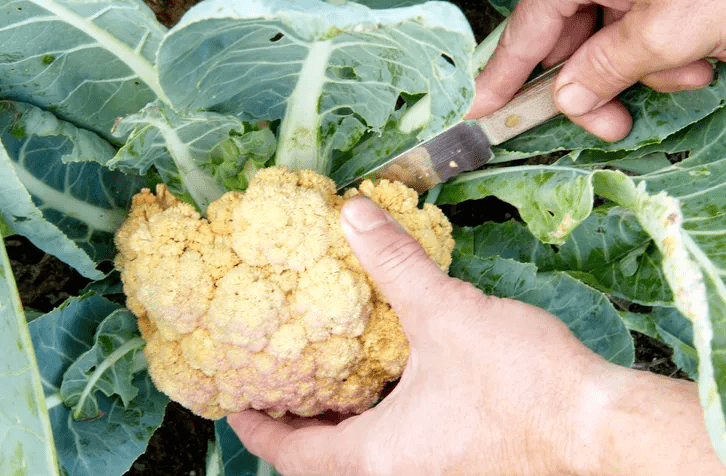
Identifying Black Spots on Cauliflower
Visual Inspection
How to spot black spots early.
When harvesting cauliflower, it’s important to use a sharp knife to cut the cauliflower head from the plant, leaving a few inches of stem attached. This helps protect the head during transportation and storage. It’s best to harvest cauliflower in the morning when the heads are cool and the dew has evaporated, as this can help prolong shelf life and maintain the quality of the produce. Proper post-harvest handling is important to ensure the cauliflower remains fresh and marketable. Store the harvested heads in a cool, humid environment to prevent wilting and maintain crispness. Additionally, gentle handling during transportation and storage can help prevent bruising and damage to the heads. By following these harvesting techniques, you can ensure that your cauliflower crop remains high quality and ready for market or consumption. When it comes to identifying causes of dark spots on cauliflower, visual inspection is key. Look for any dark or discolored spots on the surface of the cauliflower head. These spots can indicate decay or mold growth, which can affect the quality and safety of the produce. By spotting black spots early, you can take steps to remove or discard affected heads and prevent the spread of decay to other cauliflower heads. Regular monitoring and quick action can help maintain the quality and marketability of your cauliflower crop.
Differentiating Between Types of Spots
Distinguishing black spots from other common cauliflower blemishes.
When it comes to identifying causes of dark spots on cauliflower, visual inspection is key. Look for any dark or discolored spots on the surface of the cauliflower head. These spots can indicate decay or mold growth, which can affect the quality and safety of the produce. By spotting black spots early, you can take steps to remove or discard affected heads and prevent the spread of decay to other cauliflower heads. Additionally, gentle handling during transportation and storage can help prevent bruising and damage to the heads. By following these harvesting techniques, you can ensure that your cauliflower crop remains high quality and ready for market or consumption. Regular monitoring and quick action can help maintain the quality and marketability of your cauliflower crop. It’s important to know how to differentiate between black spots and other common cauliflower blemishes to ensure the overall quality of your produce.
Treating Black Spots on Cauliflower
Immediate Actions
Steps to take when you first notice black spots.
When you first notice causes of dark spots on cauliflower, it’s important to take immediate action to prevent the spread of decay. First, carefully inspect the cauliflower head for any dark or discolored spots, as these can indicate decay or mold growth. If you spot any black spots, remove or discard the affected heads to prevent the spread of decay to other cauliflower heads. Additionally, handle the cauliflower with care during transportation and storage to prevent bruising and damage to the heads, which can lead to the formation of black spots. Regular monitoring of your cauliflower crop and quick action to remove any affected heads can help maintain the quality and marketability of your produce. It’s important to differentiate between black spots and other common cauliflower blemishes to ensure the overall quality of your crop. By following these steps, you can ensure that your cauliflower remains high quality and ready for market or consumption.
Home Remedies
Natural solutions for minor infestations.
When it comes to minor infestations, there are several natural solutions you can use to address the issue. One option is to use neem oil, which is a natural insecticide that can effectively control a variety of pests. Additionally, you can try using diatomaceous earth, a non-toxic powder that can be sprinkled around the affected area to kill insects and larvae. Another natural remedy is to use a mixture of water and dish soap, which can be sprayed directly onto the infested plants to suffocate and kill the insects. Additionally, planting companion plants such as marigolds or garlic can help deter pests from infesting your garden. These natural solutions can be effective in addressing minor infestations without the use of harsh chemicals. It’s important to regularly monitor your plants and take prompt action to address any infestations to prevent them from spreading and causing further damage. By using these natural remedies, you can effectively manage minor infestations in a safe and environmentally friendly way.
Chemical Treatments
Recommended fungicides and bactericides.
When it comes to managing pests and infestations in your garden, there are several recommended fungicides and bactericides that you can use. One option is to use neem oil, which is a natural insecticide that can effectively control a variety of pests. Additionally, you can try using diatomaceous earth, a non-toxic powder that can be sprinkled around the affected area to kill insects and larvae. Another natural remedy is to use a mixture of water and dish soap, which can be sprayed directly onto the infested plants to suffocate and kill the insects. Additionally, planting companion plants such as marigolds or garlic can help deter pests from infesting your garden. These natural solutions can be effective in addressing minor infestations without the use of harsh chemicals, promoting a safe and environmentally friendly approach to pest management. It’s important to regularly monitor your plants and take prompt action to address any infestations to prevent them from spreading and causing further damage. By using these natural remedies, you can effectively manage minor infestations in a safe and sustainable way.
Storing Cauliflower Properly
Cauliflower should be stored in a cool, dry place, such as the crisper drawer of your refrigerator. Make sure to remove any leaves and store the cauliflower in a plastic bag to help retain its moisture and freshness. If you have any leftover cauliflower, you can also blanch and freeze it for longer storage. To do this, simply cut the cauliflower into florets, blanch in boiling water for a few minutes, then transfer to an ice bath before drying and freezing. Properly storing cauliflower will help it stay fresh and delicious for longer periods of time.
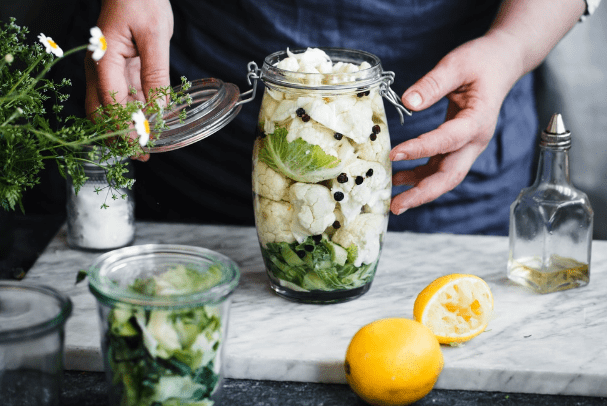
Recipes and Uses for Cauliflower with Black Spots
Trimming and Preparing
How to safely trim away black spots.
If you notice black spots on your cauliflower, it’s important to take prompt action to address the issue and prevent it from spreading. To safely trim away the black spots, start by cutting off the affected areas with a sharp knife. Make sure to cut a little bit beyond the black spots to ensure that you remove all of the affected tissue. Once you have trimmed away the black spots, thoroughly wash the cauliflower under running water to remove any remaining debris. It’s important to monitor the rest of the cauliflower to ensure that the black spots do not reappear. Properly storing the cauliflower in a cool, dry place can help prevent future issues with black spots. By taking these steps, you can effectively manage minor infestations in a safe and sustainable way.
Recipes
Delicious recipes where trimmed cauliflower can still be used.
Trimmed cauliflower can still be used in a variety of delicious recipes. One great option is to roast the cauliflower and season it with your favorite spices, such as garlic, paprika, and cumin. Another tasty option is to make cauliflower rice by pulsing the trimmed cauliflower in a food processor until it resembles rice grains. You can then use the cauliflower rice as a healthy alternative to regular rice in dishes such as stir-fries and burrito bowls. Additionally, you can use trimmed cauliflower to make a creamy and flavorful cauliflower soup or add it to a hearty vegetable curry. The possibilities are endless when it comes to using trimmed cauliflower in recipes, so don’t let a few black spots go to waste!

In conclusion, preventing and treating causes of dark spots on cauliflower is essential for maintaining the quality and appearance of the vegetable. By following the tips and techniques outlined in this guide, you can ensure that your cauliflower remains blemish-free and nutritious. Whether it’s proper storage, regular inspection, or using natural remedies, taking proactive steps to address black spots will help you enjoy delicious and healthy cauliflower dishes.
Frequently asked questions And Answer
Black spots on cauliflower are usually caused by a fungal disease called black rot, which is often brought on by warm, humid conditions.
It is not recommended to eat cauliflower with black spots, as the black rot can affect the taste and texture of the cauliflower and may also be harmful to consume.
To prevent black spots on cauliflower, it’s important to plant cauliflower in well-drained soil, practice crop rotation, and avoid overhead watering.
If the black spots are minor, you can trim them off before cooking the cauliflower. However, if the black spots are extensive, it’s best to discard the cauliflower.
To prevent black spots on cauliflower, store it in a perforated plastic bag in the refrigerator crisper drawer and use it within a few days of purchase.
It’s best to avoid using cauliflower leaves with black spots, as they may be contaminated with the black rot fungus.
Some people recommend using a mixture of baking soda and water as a natural treatment for black rot on cauliflower, but it’s best to consult with a gardening expert for proper advice.
While black rot on cauliflower may not be harmful to humans when consumed in small amounts, it’s still best to avoid eating cauliflower with black spots to prevent any potential health risks.
